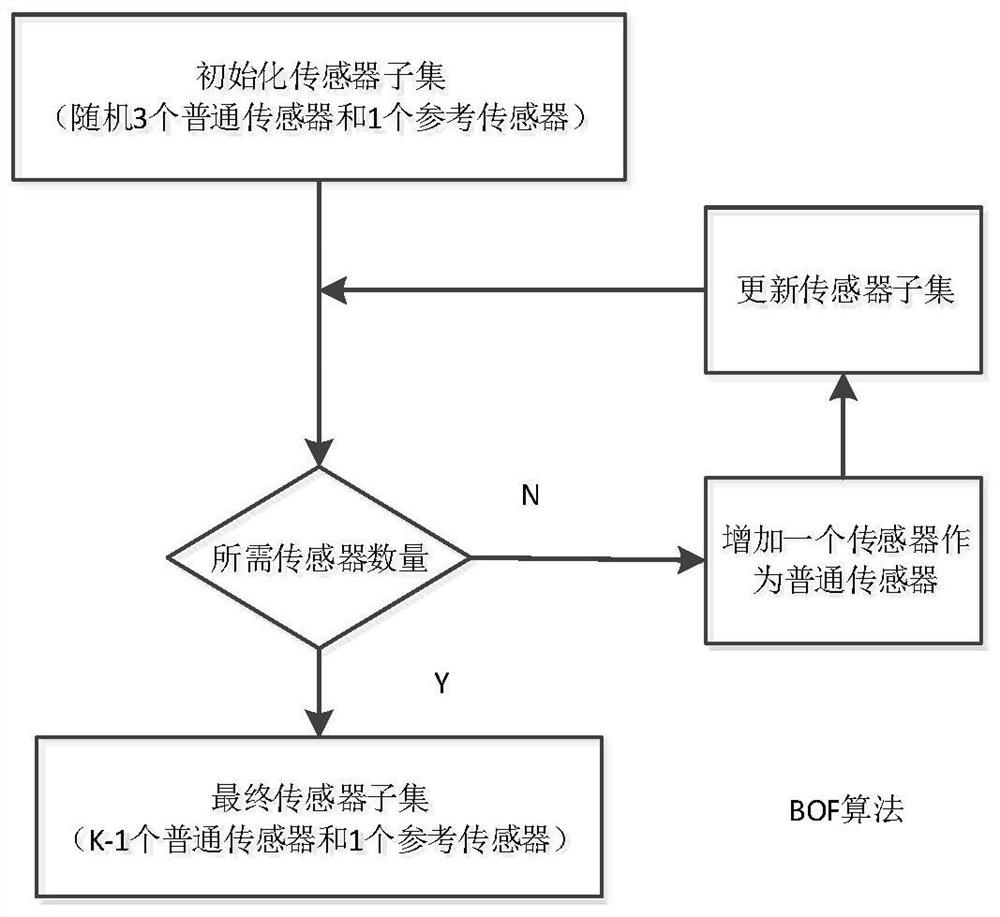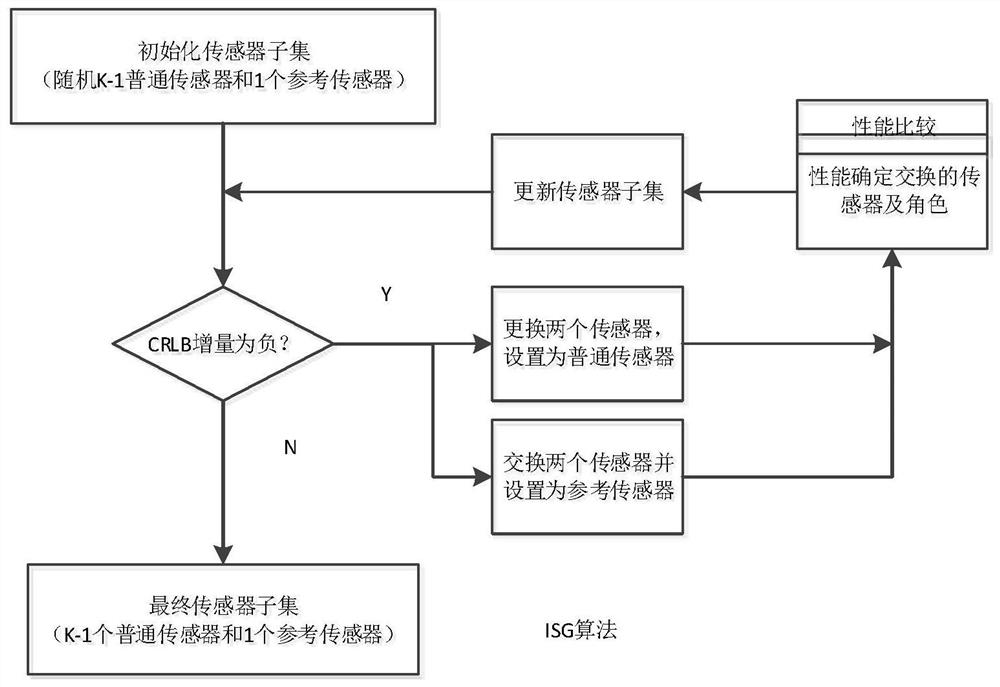Method and device for selecting sensor of wireless sensor network based on TDOA (time difference of arrival) positioning under non-line-of-sight condition
A wireless sensor network and sensor technology, applied in the field of sensor management, can solve problems such as poor positioning and tracking geometric figures, and achieve the effect of improving positioning accuracy
- Summary
- Abstract
- Description
- Claims
- Application Information
AI Technical Summary
Problems solved by technology
Method used
Image
Examples
Embodiment Construction
[0078] The embodiments of the present invention are described in detail below. This embodiment is implemented on the premise of the technical solution of the present invention, and detailed implementation methods and specific operating procedures are provided, but the protection scope of the present invention is not limited to the following implementation example.
[0079] S101: Acquiring candidate reference sensors and other common sensors based on the Ferch information of the Cramereau boundary in non-line-of-sight conditions with unknown parameter vectors.
[0080] In the wireless sensor network, a space Cartesian coordinate system is established in advance, and the position of a radiation source emitting a measurement signal needs to be determined based on TDOA (TIme difference of Arrival, time difference of arrival); the sensor network consists of S space-separated sensors, the set as The position coordinates of the sensor are s i =(x i ,y i ,z i )T, i=1,...,S; wher...
PUM
 Login to View More
Login to View More Abstract
Description
Claims
Application Information
 Login to View More
Login to View More - R&D
- Intellectual Property
- Life Sciences
- Materials
- Tech Scout
- Unparalleled Data Quality
- Higher Quality Content
- 60% Fewer Hallucinations
Browse by: Latest US Patents, China's latest patents, Technical Efficacy Thesaurus, Application Domain, Technology Topic, Popular Technical Reports.
© 2025 PatSnap. All rights reserved.Legal|Privacy policy|Modern Slavery Act Transparency Statement|Sitemap|About US| Contact US: help@patsnap.com



